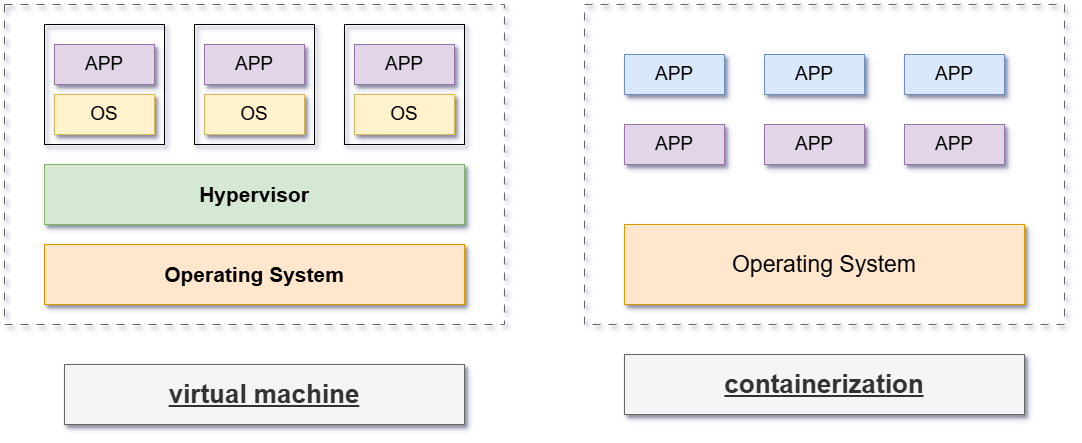Understanding Containers and Virtualization
Today, many companies use two popular technologies to run applications: virtualization and Containers. Both allow you to run multiple applications on a single machine, but they work in different ways.
What is virtualization?
Virtualization means creating multiple virtual machines (VMs) on one physical server using software called a hypervisor (like VMware or VirtualBox).
Each virtual machine runs its own full operating system (OS). So it is like having many computers inside one computer.
Example: You can run Windows, Ubuntu, and CentOS on the same laptop using virtualization.
What is containerization?
Containerization is a newer technology. It runs applications in containers, which are lightweight and share the same OS as the host system.
Containers don’t need a full operating system for each app. They just package the application + required files and run quickly.
Example: You can run 10 containers on one Linux server, and they all start in seconds.
ALSO READ:
- Reusable Terraform Modules Made My AWS EC2 Setup Super Easy
- Effortless AWS EC2 Deployment with Terraform: Automate Your Infrastructure Today!
- Easy Migrated MySQL from System to Docker with Data and Volume Storage 2025
Differences: Container vs Virtualization
| Feature | Virtualization (VM) | Containerization |
|---|---|---|
| OS per unit | Each VM has its own OS | Containers share host OS |
| Resource usage | Heavy – uses more CPU and RAM | Light – uses less resources |
| Startup time | Slow – takes minutes | Fast – starts in seconds |
| Security level | Strong isolation | Medium isolation |
| Use cases | Best for running different OS types | Best for microservices and DevOps |
| Tools used | VMware, VirtualBox | Docker, Podman |
When to Use What?
Virtualization:
- You need to run different operating systems (like Linux and Windows).
- You want strong security isolation.
Containers:
- You are building microservices.
- You want fast, lightweight app deployments
Click here to go GitHub repos link

